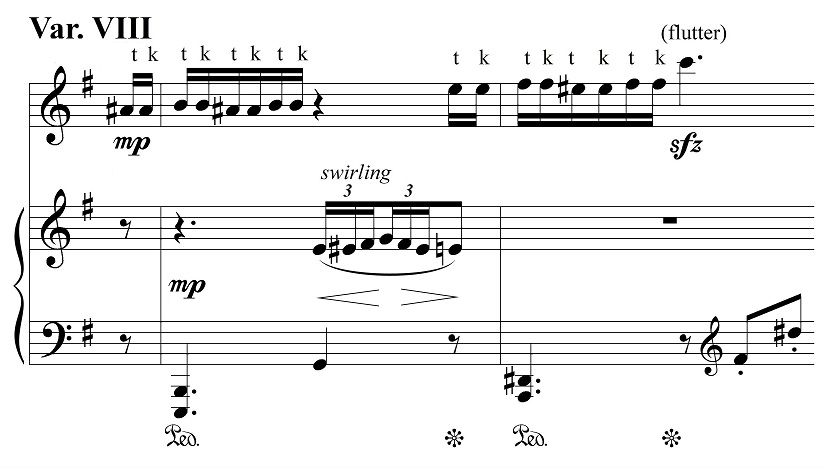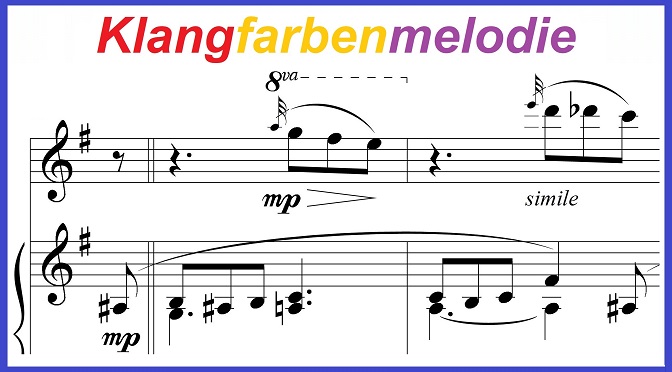Klangfarbenmelodie: Variations for Flute and Piano
The term Klangfarbenmelodie — “sound color melody” — was coined by Arnold Schoenberg, although one can find examples of it going back at least as far as Bach and Beethoven. The term refers to the splitting of a melody among several instruments. My Variations for Flute and Piano use the technique in several of the variations, although of course the technique is limited here to the two instruments available.
After a four-bar introduction, the flute has the main melody in the Theme, which is in a lively 6/8 meter. The first phrase of the Theme consists of the following basic components, in sequence: a three-note neighbor-tone figure, a three-note stepwise descent, another neighbor-tone figure on a higher level, and a closing upward leap.
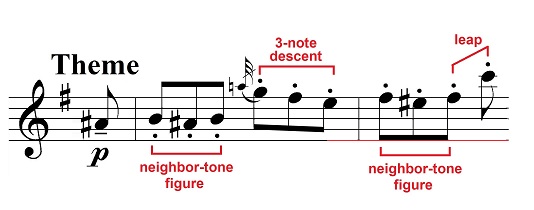
When the corresponding phrase appears at the start of Variation I, the piano plays the two neighbor-tone figures and the leap, and the intervening three-note descent is provided by the flute.
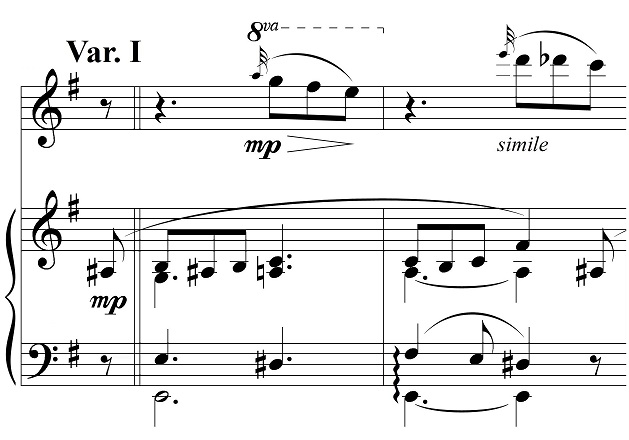
Note how the contrast in tone colors is accentuated by the contrast in registers, as the piano components are in a relatively low register and the flute motives are in a high octave.
Variation III is in the style of a mournful Baroque aria, with the piano serving in the role of continuo. The piano part is marked stile di clavicembalo, and in my own interpretation (around 2:30 in the video below), I roll the opening chord in the manner of a harpsichordist. The first neighbor-tone figure becomes a written-out Baroque ornament (mordent) in the upper staff of the piano part. The three-note descent, second neighbor-tone figure, and closing leap are presented in ornamented form by the flute. Note that the last two tones of the second neighbor-tone figure are realized by the Nachschlag (the C-double-sharp and D-sharp grace notes) of the trill.
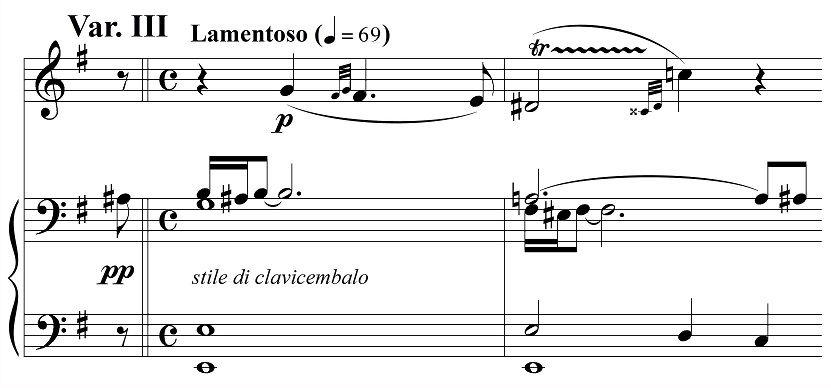
Variation VIII is a spoof on twentieth-century avant-garde music, in which Schoenberg’s Klangfarbenmelodie concept is combined with extended techniques in the flute, chaotically shifting time signatures, and cacophonous chords in the piano part. In the first phrase, the two neighbor-tone figures are realized by double-tonguing in the flute part. The three-note descent, which was G-F♯-E in the original theme, is expanded to a swirling figure in the piano part that passes chromatically from E up to G and back. The final leap is emphasized by a flutter tone in the flute, marked sforzando.
